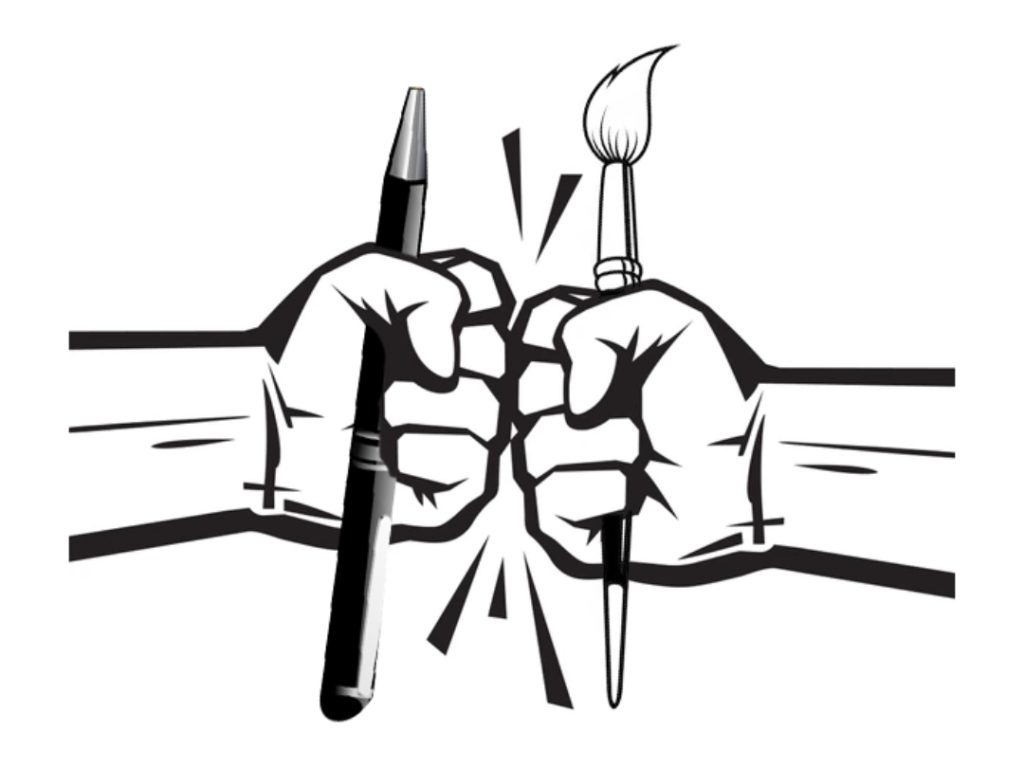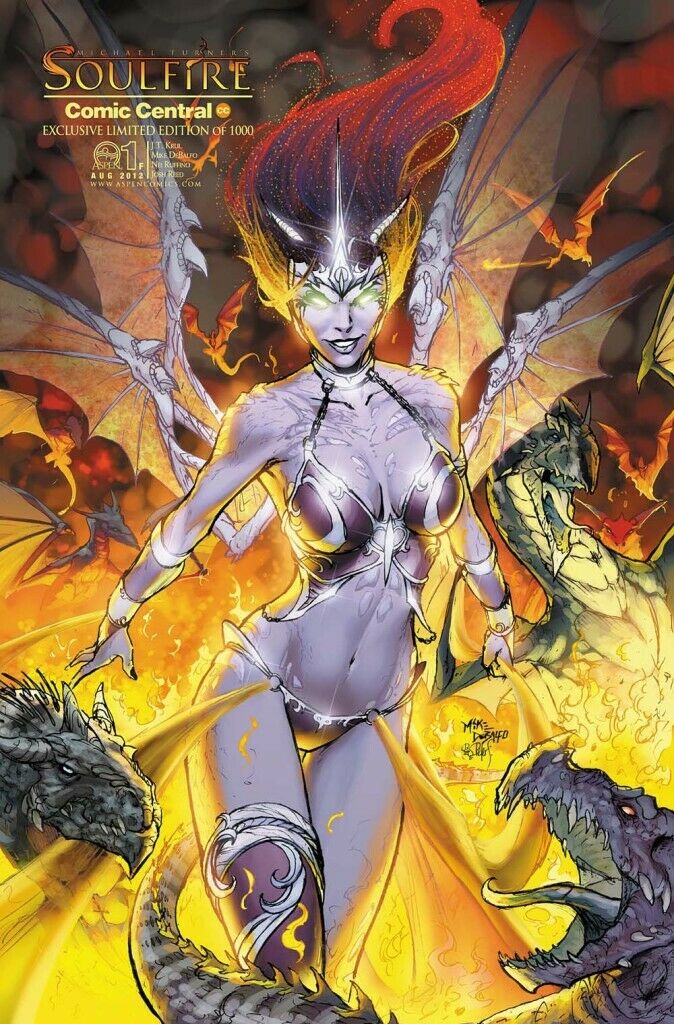By Mindy Wheeler

We adapt to the life of social media more and more every day. Infinite interconnectedness also means a merging of multiple industries that previously had little to no connection before the digital age. One such merging I’ve witnessed over the past few years is an influx of painters and 3D artists into the comic book world. As these new types of artists brush shoulders with established comic book artists, ignorance of each other’s mediums can result in hostility. Such was the case surrounding this specific painted cover of Rogue by Victor Garduno.
Zenescope/Lady Death pin-up artist Mike Krome recently took to Facebook to criticize Victor’s piece, accusing it of being AI-generated. This caused harsh blowback from Mike’s fans toward Victor, who is by trade a fine art painter who paints using various photo references and references he creates himself. This incident made me wonder if anyone told Victor (and every other painter and 3D modeler entering the scene) that comic art is expected to be drawn from imagination. New artists often remain unaware of this standard, yet they are being published left and right, even with Marvel and DC.
In my experience, I’ve found many comic book artists to be unwilling to share industry knowledge and quick to shame others, stemming from a competitive nature. This attitude has only backfired as new types of artists enter the industry in huge waves (thanks to social media), regardless of what established comic book artists say about it. These new artists also don’t care to conform, as they bring their own styles and audiences.

The truth is, the comic book medium is simply evolving. With new types of fans each artist brings with them, the medium expands, drawing more eyes to all of our projects. While some comic book artists see this as competition, I see it as growth. During this growth, I encourage everyone to learn the basics behind each technique, as each requires a different skill set and should be appreciated in its own way. When fans see three pieces of art on a table—one drawn by hand, one painted from reference, and one 3D-modeled—they tend to only care about the end result. Understanding how each piece got from A to B can help you better support artists for their individual efforts and appreciate each art piece more for what went into it.
Here’s a good breakdown of the skills and setbacks for each medium: comic book art, painting, and 3D art.
Painters
Painters create from various photo references. They are not expected to memorize the human anatomy in every way from complete construction; their expertise is in color, light, and replication. Their process is as follows: 1. Research. They have to find or even sometimes painstakingly create their own references because they are usually heavily reliant on photo references. 2. They proceed to replicate different aspects of their references to produce the desired result they conceptualized.
Painters can blend colors and carve out three-dimensional volume from two-dimensional planes (which even comic book artists struggle with). They are usually highly skilled at drawing what they see. If they can improve their craft to go beyond photo references and harness the skill of painting light from imagination, they can become highly skilled comic book colorists; however, they tend to be limited by only what they see and are often perfectionists, making the process time-consuming.
I see more and more painters doing Marvel and DC covers because they are so focused on that perfect, picture-esq result. Fans love seeing their characters in a polished, jaw-dropping pose, which is why they make great cover artists. However, painters are not cut out for sequential work. Some of the best cover artists would probably draw some of the worst comic book pages, and take forever doing it, because construction and fast-paced drawing is not their strong suit.

One of the most common techniques used in painting is the grid technique, taught in art schools everywhere. The concept is to take a photograph, grid it out, then replicate it onto a canvas focusing on the shapes in each square so that what you draw matches up accurately with the photo. There are even apps on your phone which can help you grid. Another technique is to use a projector and project the image straight onto your canvas so you can trace the outline of it, then go back in with your colors and fill it in. I see many of these types of artists on Instagram with hundreds of thousands of followers, creating artwork of comic book characters all day long.
Comic Book Artists
There are two types of comic book artists: cover artists and sequential artists.
Cover Artists
Cover artists work hard, but for the same reason as painters, they are usually not cut out to be sequential artists. They should possess the skill to draw from imagination, which would make them excellent sequential artists if they had the time to commit to the learning curve, but it’s not usually not in their cards. You can think of them as the in-between of painters and sequential artists. Their expertise is in creating beautifully polished pieces without such a heavy reliance on photo reference and no use of color.

They also have a skill set that painters don’t, concerning line work and composition. They are masters of clean, beautiful line work which accentuate the features of their characters and adds depth. Master cover artists put in years of hard work to reach their peak, and it’s through that hard work you’ll see them develop their own unique style of line work, which painters usually lack completely.
However, when it comes to the power of replicating shapes, painters sometimes have an edge for being better at drawing what they see, so cover artists tend to make more anatomical mistakes. Still, comic book fans often don’t care and are happy to overlook these minor anatomical mistakes because they appreciate the skill of the artist to be able to execute what they imagined without referencing anything already in existence.
Sequential Artists

One of the most grueling jobs out there is to be a comic book sequential artist. The less photo reference an artist uses, the more they activate the abstract part of their minds to compensate, which is mind-blowing-difficult. To be able to pull entire pages and make full-fledged books of hundreds of panels from your imagination, with the added mastery of movement, beauty, composition, and an understanding of perspective, is a god-level talent that artists work for decades to perfect, and the perfection process seems never-ending. Even sequential artists working for Marvel and DC use photo references to help them learn as they memorize thousands of poses, muscles, the behavior of clothing and metals, different animals and buildings, etc but their end goal is to be able to draw anything at the drop of a hat. After a career of drawing sequentials, they are essentially a memory bank of information and also have developed their own unique style of drawing.
Artists from different mediums usually don’t realize how many years of hard work it takes to be able to be a successful sequential artist. Painting what you see typically takes much less time to master. The greats of the comic book industry are those who can draw pretty much anything scene or pose in detail, and in just under a few minutes, which is just about unimaginable for a painter. This job is not for the faint of heart. They say it takes 10,000 hours of practice to master a skill. Working part-time drawing 30 hours a week means it will take you 10 years to get to that level and even then, I’d argue, you’ve just barely begun since art is an ever-improving skill. If you have no limits to what you can draw, that means you have no limits to what you can improve. Every once in a while, you will see a painter turned sequential artist, such as Alex Ross…

He is one of my favorites however some fans do not like the reliance on photo references so they instead prefer the artwork of someone like David Finch, Jim Lee, or Michael Turner. It’s for this technical reason of drawing from imagination that most comic book art tends to look more cartoonish or with exaggerated anatomy. While that may drive painters crazy, it’s also what endears many fans to the medium. Some of the most revered and respected comic book artists, such as Michael Turner, could draw a detailed sketch in around 5 minutes. Jack Kirby at his peak drew 4 and 5 sequential pages a day. Many fans adore this unique exaggeration of the human form and they appreciate the hard work that it takes.

3D Artists
A recent example who has come to my attention is Rafael Grassetti. I noticed his Marvel Spiderman cover, in particular. 3d artists such as Rafael usually use assets available to them for purchase in a downloadable library, or assets they create, to import and adjust as necessary to get their desired result. They then render lighting and textures to create a picture-esq result which they capture like a photograph. This photograph becomes a comic book cover.

This skill requires heavy technical knowledge of 3d programs. These sofwares enable artists to cut, shape, and replicate 3d objects into the form they need (such as Spider-man), then apply filters and textures to those objects. Some 3d artists mold objects from scratch but in most cases where human anatomy is involved, I’d imagine the use of an already created 3d asset is handy. You can even download your favorite celebrity’s face online nowadays to impose on your 3d model. This is the most disconnected from traditional comic book art; nonetheless, comic covers are being created utilizing this medium.
So, now that you are more familiar with the process, I hope you can appreciate each artist for what they bring to the table. There will always be a place for traditional art as long as anyone is willing to pick up a pencil or a paintbrush, and there will always be digital art as long as someone has access to the programs. Both are unique in their own right. So go forth, True Believers, and enjoy your comic book art, but know the difference between each style so that you are not fooled into appreciating something for what it’s not.
—Mindy Wheeler, Art Director, Comics Illustrated

